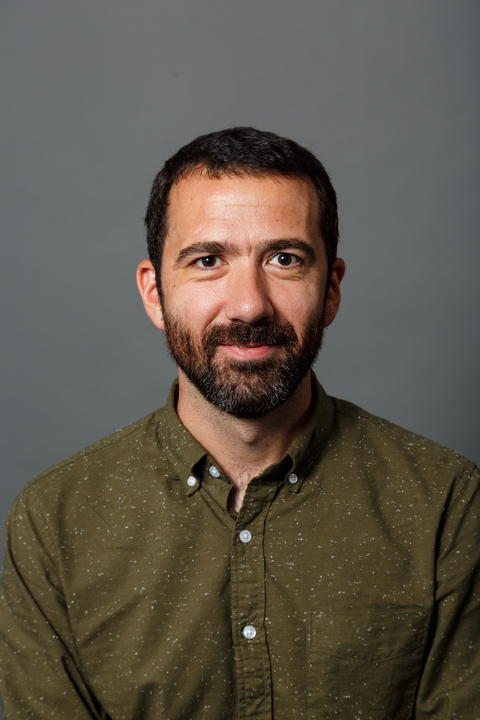Rooney, A.D., Millikin, A.E.,† and Ahlberg, P., 2022. Re-Os geochronology for the Cambrian SPICE event: Insights into euxinia and enhanced continental weathering from radiogenic isotopes. Geology, 50(6), pp.716-720 doi.org/10.1130/G49833.1
Millikin, A.E†., Strauss, J.V., Halverson, G.P., Bergmann, K.D., Tosca, N.J. and Rooney, A.D., 2022. Calibrating the Russøya excursion in Svalbard, Norway, and implications for Neoproterozoic chronology. Geology, 50(4), pp.506-510. doi.org/10.1130/G49593.1
Gibson, T.M†., Millikin, A.E†., Anderson, R.P., Myrow, P.M., Rooney, A.D. and Strauss, J.V., 2021. Tonian deltaic and storm-influenced marine sedimentation on the edge of Laurentia: The Veteranen Group of northeastern Spitsbergen, Svalbard. Sedimentary Geology, 426, p.106011. doi.org/10.1016/j.sedgeo.2021.106011
Yang, C., Rooney, A.D., Condon, D.J., Li, X.H., Grazhdankin, D.V., Bowyer, F.T., Hu, C., Macdonald, F.A. and Zhu, M., 2021. The tempo of Ediacaran evolution. Science advances, 7(45), p.eabi9643. doi.org/10.1126/sciadv.abi9643
Katchinoff, J.A., Syverson, D.D., Planavsky, N.J., Evans, E.S.J.† and Rooney, A.D., 2021. Seawater chemistry and hydrothermal controls on the Cenozoic osmium cycle. Geophysical Research Letters, 48(20), p.e2021GL095558. doi.org/10.1029/2021GL095558
Sperling, E.A., Melchin, M.J., Tiffani, F., Stockey, R.G., Farrell, U.C., Bhajan, L., Brunoir, T.N., Cole, D.B., Gill, B.C., Lenz, A., Loydell, D.K., Malinowski, J., Miller, A.J., Plaza-Torres, S., Bock, B., Rooney, A.D., Tecklenburg, S.A., Vogel, J.M., Planavsky, N.J., Strauss, J.V., 2021, A long-term record of early to mid-Paleozoic marine redox change. Science Advances 7, eabf4382, doi.org/10.1126/sciadv.abf4382
Busch, J.F., Rooney, A.D., Meyer, E.E., Town, C.F., Moyniham, D.P. and Strauss, J.V., 2021, Late Neoproterozoic - early Paleozoic basin evolution in the Coal Creek inlier of Yukon, Canada: implications for the tectonic evolution of northewestern Laurentia. CJES 99, p.1-23, doi.org/10.1139/cjes-2020-0132
Syverson, D.D.,† Katchinoff, J.A.R., Yohe, L.R., Tutolo, B.M., Seyfried, W.E., Rooney, A.D., 2021, Experimental partitioning of osmium between pyrite and fluid: Constraints on the mid-ocean ridge hydrothermal flux of osmium to seawater., Geochimica et Cosmochimica 293, p. 240-255, doi.org/10.1016/j.gca.2020.10.029
Rooney, A.D., Cantine, M.D., Bergman, K.D., Boag, T.H., Busch, J.F., Sperling, E.A., Strauss, J.V., 2020, Calibrating the co-evolution of Ediacaran life and environment, PNAS, 117 p. 16824-16830, doi.org/10.1073/pnas.2002918117
Rainbird, R.H., Rooney, A.D., Creaser, R.A., Skulski, T. 2020, Shale and pyrite Re-Os ages from the Hornby Bay and Amundsen basins provide new chronological markers for Mesoproterozoic stratigraphic successions of northern Canada. Earth and Planetary Science Letters. doi.org/10.1016/j.epsl.2020.116492
Rooney, A.D., Chang, Y., Condon, D.J., Zhu., M and Macdonald, F.A., 2020, U-Pb and Re-Os geochronology tracks stratigraphic condensation in the Sturtian Snowball aftermath, Geology. 48 p. 625-629, doi.org/10.1130/G47246.1
† represents student or postdoc author
